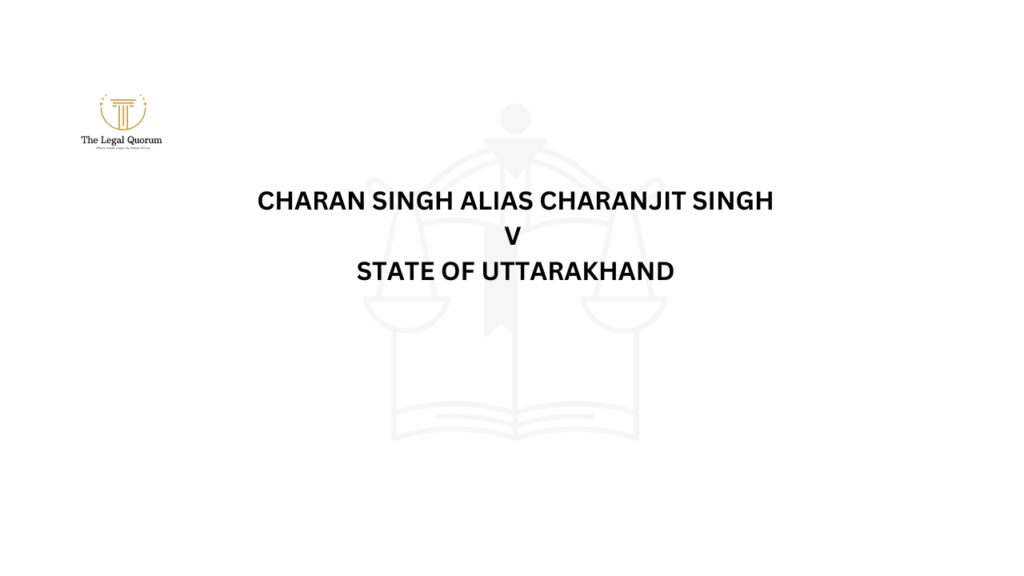Published On: 28th July, 2023
Corporate Social Responsibility and Legal Obligations
INTRODUCTION:
Business organizations are required to display moral leadership and ethical behaviour. But the standard has progressively risen over the last 50 years. Firms are now called upon to exhibit virtue as well as “social responsibility” or “corporate citizenship,” taking some responsibility for society’s wellbeing. Marketers should play a key role in designing and putting their company’s social responsibility initiatives into action since they are the boundary-crossers in charge of how the business interacts with diverse publics. Corporate social responsibility (CSR) is increasingly often discussed in commercial and regulatory discussions. Simply put, CSR entails shifting the focus of corporate responsibility from maximizing profits for shareholders within legal boundaries to responsibility to a broader range of stakeholders, including communal concerns such as environmental protection, and accountability on both ethical and legal obligations. CSR highlights how commercial relationships and impact relationships are entwined with the legal obligations of businesses and, as a result, with responsibility.
At the most basic level, CSR is reflected in the company’s decisions on where and how to do business in accordance with the social, political, legal, and ethical norms of the communities in which it works. As these groups are either fully or partially integrated into their respective communities, it is unlikely that a company’s CSR strategy will be independent of, or even separate from, its core value propositions to its clients, employees, suppliers, shareholders, or other important stakeholders. It is the company’s voluntary initiatives and actions aimed at contributing to society and the environment beyond their legal obligations. While legal obligations are mandated by law, CSR is driven by a company’s sense of responsibility to be a good corporate citizen and make a positive impact on society.
CATEGORIES OF CSR:
To be effective, CSR must be embraced by ethical entrepreneurs, hence it must be structured to cover all facets of corporate social responsibility. The social duties fall under four categories: philanthropic, legal, ethical, and economic obligations. Although each of these responsibilities has been in some capacity for some time, ethical and philanthropic obligations have just recently come to the forefront. Historically, business organizations were formed as economic entities to provide goods and services to members of society. The profit motive has been identified as the primary incentive of entrepreneurship. Prior to everything else, the business organization served as the fundamental society’s economic unit. As a result, its major purpose was to create items and services that consumers desired and needed while still generating a respectable profit. Maximum profit is a societal ideal that evolved from the profit motivation at some point. All other business obligations are reliant on the firm’s economic duty since they are meaningless without it. As the fundamental guidelines under which a company must operate, it is also required to adhere to the laws and regulations imposed by the federal, state, and local governments. The profit motivation is the only one that is permitted by society for commercial operations. As part of the “social contract” between business and society, businesses are expected to fulfill their economic goals within the confines of the law.
The concept of “codified ethics” is represented in legal requirements since they stand for basic ethical standards that have been established by our lawmakers. Even if economic and legal obligations convey ethical conceptions of justice and fairness, ethical requirements also encompass behaviors that society’s participants ban or expect, even if those behaviors are not specifically listed in the law. The standards, norms, or expectations that show care for what customers, employees, shareholders, and the community regard to be just or proper, or that are compatible with upholding or protecting stakeholders’ moral rights are known as ethical duties. Since they serve as the driving force behind the creation of new laws, growing ethics or values can be seen as taking place before the creation of laws.
“Philanthropy” refers to business activity that complies with social norms for respectable corporate conduct. This entails participating in initiatives or acts that advance the well-being or reputation of others. Businesses that support the community, the arts, or education may donate money or executive time as part of philanthropy. Philanthropic obligations are distinct from ethical obligations in that the former are not expected in a moral or ethical sense. Communities expect companies to provide money, resources, and employee time to charity initiatives and causes, but they do not consider such companies as immoral if they do not provide the necessary level of assistance. Therefore, generosity on the side of corporations is more optional even if there is always a cultural expectation that they do so.
Every business operates within a legal framework defined by local, national, and international laws and regulations. These laws establish minimum standards for business conduct and cover various aspects such as labour rights, environmental protection, consumer safety, and financial transparency. Companies must comply with these legal obligations to avoid penalties, lawsuits, and reputational damage. CSR and legal obligations are not mutually exclusive. In fact, there is often significant overlap between the two. Many CSR initiatives align with or even complement legal requirements. For example, a company committed to environmental sustainability may voluntarily adopt practices that go beyond what is strictly mandated by environmental regulations.
Moreover, some governments have begun integrating CSR principles into their legal frameworks, making certain responsible practices mandatory. This integration helps encourage businesses to embrace socially and environmentally responsible behaviours actively. Some governments, for example, have made corporate sustainability reporting mandatory, forcing corporations to declare their efforts in areas such as carbon emissions reduction, diversity and inclusion, and supply chain ethics.
HISTORY, EVOLUTION, AND FUTURE OF CSR:
CSR has gone through some remarkable transformations over the years. Some company owners participated in charity activities such as giving to schools, hospitals, and community initiatives throughout the nineteenth century. However, these initiatives were frequently erratic and did not form part of a larger strategic approach to CSR. There was a rising understanding of the detrimental social and environmental consequences of industrialization in the early twentieth century. Labour movements and social activists began to demand better working conditions, more equitable salaries, and higher safety requirements.
There was a trend towards a more comprehensive perspective of CSR in the mid-twentieth century. Scholars and business executives began debating firms’ role in society and their duties beyond shareholders. Concepts such as “stakeholder theory” evolved, emphasizing the need to take into account the interests of all stakeholders, including employees, consumers, communities, and the environment. During this time, official CSR activities and frameworks emerged. The Global Compact, published by the UN in 1999, urged companies to embrace environmentally and socially responsible corporate practices. Furthermore, corporate crises and natural disasters raised public pressure on corporations to be more accountable and transparent in their operations. CSR exploded in popularity in the early 2000s. To improve their reputation and achieve a competitive advantage, several multinational firms included CSR in their business plans. Sustainability reports became more prevalent for reporting on CSR activities, allowing stakeholders to examine a company’s social and environmental implications.
The legal duties relating to CSR have changed according to nation and jurisdiction. Historically, companies were largely bound by labour laws and regulations, environmental restrictions, and consumer rights. These rules were designed to set basic standards of behaviour and to safeguard society from corporate misuse.
As CSR became more popular, several nations enacted legislation mandating firms to report non-financial information, such as their social and environmental consequences. Furthermore, several nations have created regulatory frameworks that either require CSR practices for certain industries or encourage corporations to engage in CSR on their own.
The growth of social media and digital communication has increased public knowledge and scrutiny of business practices. To retain their reputation and client loyalty, businesses will most certainly be pushed to be more socially and ecologically responsible. Governments may continue to create and enhance CSR legislation, requiring businesses to adopt sustainable and responsible practices. When making decisions, investors and stakeholders are increasingly considering environmental, social, and governance considerations. Companies that place a premium on CSR are more likely to attract investors and achieve a competitive edge. Climate change, wealth inequality, and resource depletion will necessitate greater engagement by corporations through CSR activities to address these challenges. CSR is likely to become more deeply integrated into business strategies, rather than being seen as a separate function. Companies will recognize that being socially responsible is not only a moral imperative but also a critical component of long-term business success. Technology can play a significant role in advancing CSR efforts, such as through improved supply chain transparency, renewable energy adoption, and innovation in sustainable products and services.
CASE LAWS RELATED TO CSR:
In the multifaceted landscape of Corporate Social Responsibility and legal obligations, some landmark case laws have emerged, each providing valuable insights into the intricate interplay between business conduct and its broader impact on society and the environment.
- Chevron v. Donziger (2011-2021): The Chevron case involved a long-running legal battle over environmental pollution in Ecuador allegedly caused by Texaco (later acquired by Chevron). Steven Donziger, a lawyer representing the affected communities, won a multi-billion-dollar judgment against Chevron in Ecuador. However, Chevron claimed that the judgment was obtained through fraud and racketeering. The case became a significant example of how legal obligations and CSR intersect in the context of environmental responsibility and corporate liability for the actions of subsidiaries.
- Union Carbide Corporation (Bhopal Gas Tragedy) – The Bhopal Gas Tragedy was a catastrophic industrial accident involving a Union Carbide pesticide plant in Bhopal, India. A gas leak resulted in thousands of deaths and injuries, making it one of the world’s worst industrial disasters. The incident raised significant questions about corporate responsibility for environmental and safety standards in developing countries.
In the pursuit of progress, these pivotal case laws remind us that the principles of Corporate Social Responsibility and legal obligations must continuously evolve, empowering businesses to embrace their role as agents of positive change, leaving a lasting legacy of ethical practices and societal betterment for generations to come.
CONCLUSION:
Companies that embrace CSR while meeting their legal obligations have the potential to be exemplary corporate citizens. They can gain a competitive advantage, attract more customers, and foster stronger relationships with stakeholders. As societal expectations and regulations change, companies must continually reassess their practices and commit to improving their social and environmental impact genuinely. Companies should openly communicate their CSR initiatives, progress, and challenges to stakeholders, ensuring sincerity and avoiding deceptive practices. Additionally, organizations must establish robust internal mechanisms to monitor compliance with legal obligations and identify and rectify any lapses promptly. Ultimately, the synergy between CSR and legal obligations can create a positive and lasting impact on society, contributing to sustainable development, responsible business practices, and the well-being of people and the planet. By prioritizing both aspects, companies can build trust and credibility, reinforcing their role as responsible global actors committed to making a difference beyond their balance sheets.
REFERENCES
- Wan-Jan, W. S. (2006). Defining corporate social responsibility. Journal of Public Affairs, 6(3-4), 176–184. doi:10.1002/pa.227
- Windsor, D. (2001). THE FUTURE OF CORPORATE SOCIAL RESPONSIBILITY. The International Journal of Organizational Analysis, 9(3), 225–256. doi:10.1108/eb028934
- Moura‐Leite, R. C., & Padgett, R. C. (2011). Historical background of corporate social responsibility. Social Responsibility Journal, 7(4), 528–539. doi:10.1108/1747111111117511
- Lantos, G. P. (2001). The boundaries of strategic corporate social responsibility. Journal of Consumer Marketing, 18(7), 595–632. doi:10.1108/07363760110410281
- Carroll, Archie B. “The pyramid of corporate social responsibility: Toward the moral management of organizational stakeholders.” Business Horizons 34.4 (1991): 39-48.
- Devinney, Timothy M., Joachim Schwalbach, and Cynthia A. Williams. “Corporate social responsibility and corporate governance: Comparative perspectives.” Corporate Governance: An International Review 21.5 (2013): 413-419.
- Tamvada, Mallika. “Corporate social responsibility and accountability: a new theoretical foundation for regulating CSR.” International Journal of Corporate Social Responsibility 5.1 (2020): 1-14.
- McBarnet, Doreen. “Corporate social responsibility beyond law, through law, for law.” U. of Edinburgh School of Law Working Paper 2009/03 (2009).
- Lambooy, Tineke. “Legal aspects of corporate social responsibility.” Utrecht J. Int’l & Eur. L. 30 (2014): 1.





Ꮩery еnergetic аrticle, I enjoyеd tһat a lot.
Will there bе a part 2?